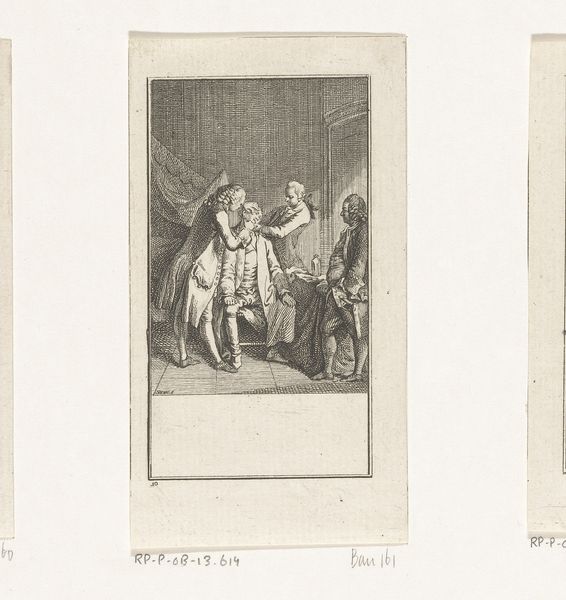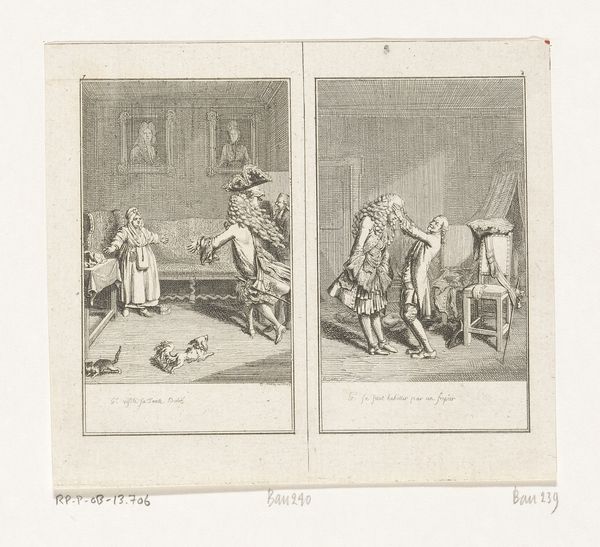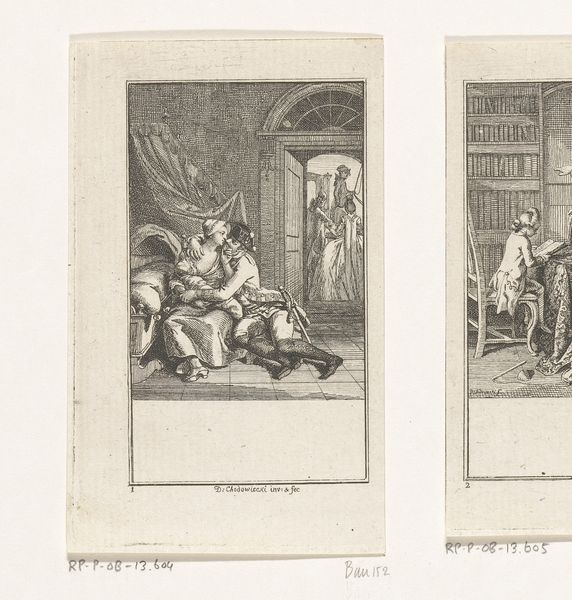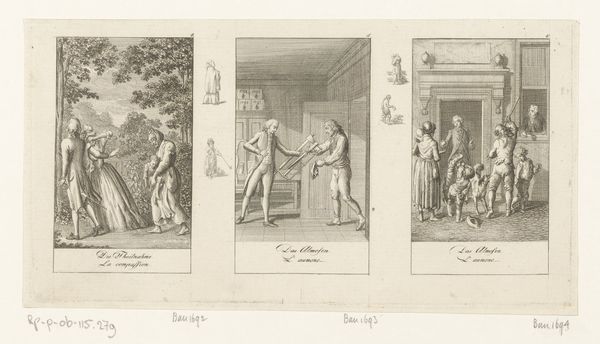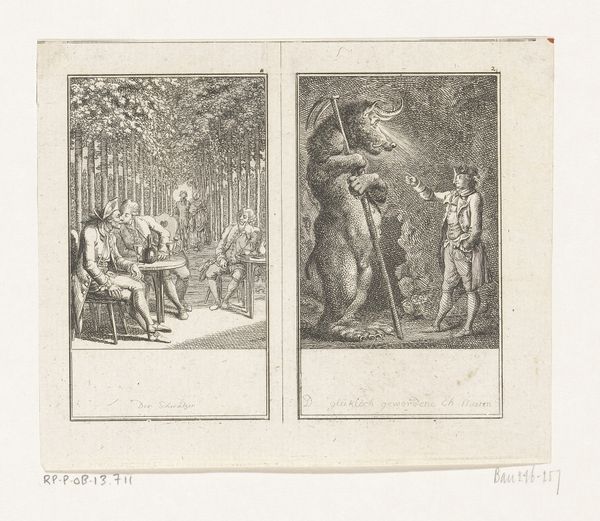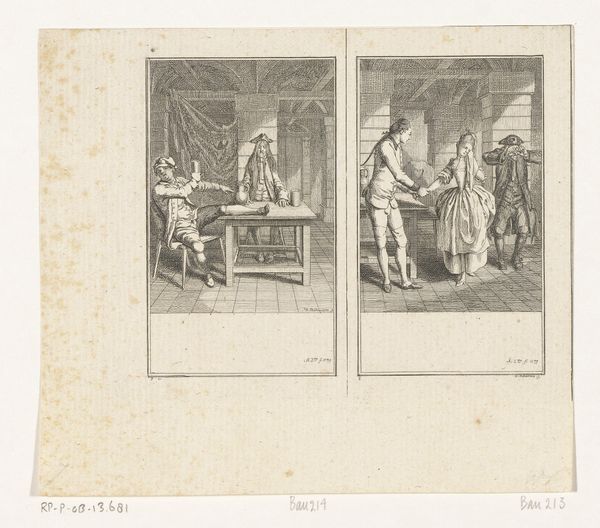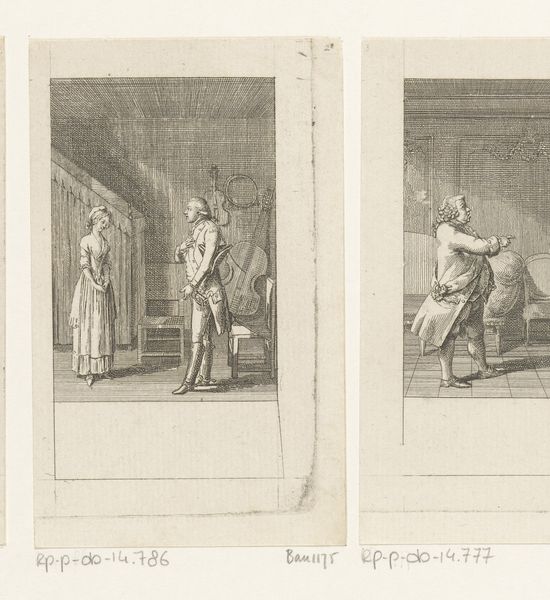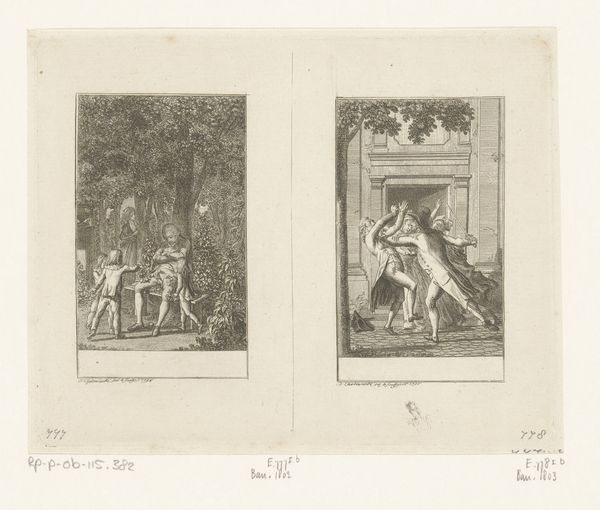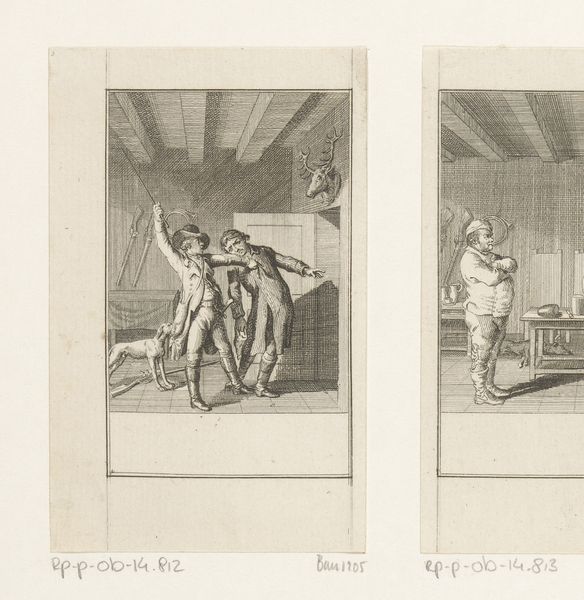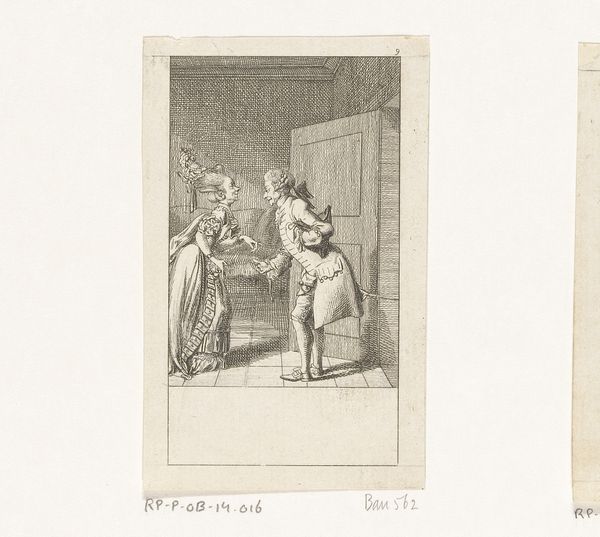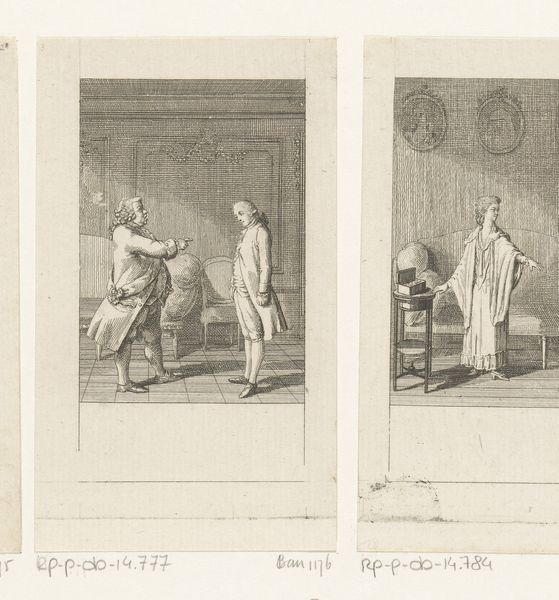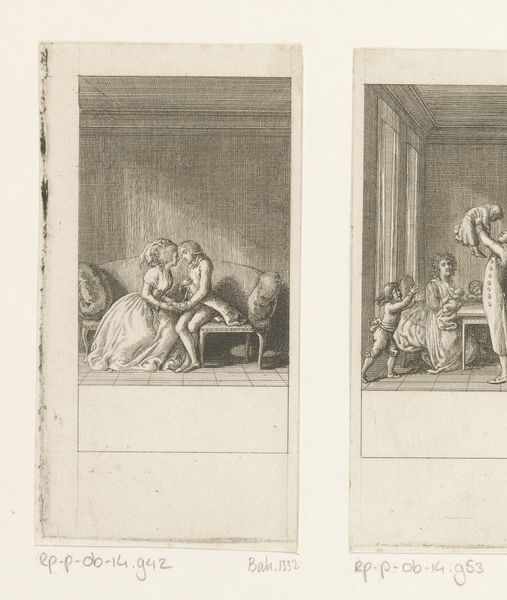
Dimensions: height 127 mm, width 145 mm
Copyright: Rijks Museum: Open Domain
Editor: Here we have Daniel Chodowiecki’s "Two Scenes from the Deserter," created in 1774. It’s an engraving, presented almost like a comic strip. I’m immediately struck by the contrast between the emotional intensity in each panel, even though they’re rendered in such precise lines. What can you tell us about this piece? Curator: Chodowiecki was very engaged with Enlightenment ideals, and this work serves as social commentary, packaged in a readily accessible print format. Consider how printed images were democratizing art consumption at the time. No longer were narratives solely in the realm of the wealthy elite. This particular piece likely ties into the public discourse surrounding military service and desertion, something that carried heavy legal and social ramifications. Note the architecture of the prison – how might the starkness of the environment reinforce the narrative? Editor: That’s a good point, the setting definitely amplifies the grim atmosphere. Was Chodowiecki trying to provoke a specific reaction from the viewer, perhaps critique the military system itself? Curator: Possibly. It is worth remembering the context: armies were often comprised of conscripted men, not necessarily driven by patriotic zeal. By portraying these moments of vulnerability and despair, he’s perhaps inviting the viewer to question the human cost of military discipline. Do you notice any specific details in the clothing or posture that further inform his message? Editor: I see it. The slumped posture of the man in the first scene shows defeat, while the frantic expressions of the men in the second indicate desperation. This is really heavy stuff depicted in a very unassuming medium. Curator: Precisely. Chodowiecki masterfully used a relatively simple medium to engage in complex socio-political commentary, revealing the power of art as a tool for social discourse and moral questioning. Editor: I never considered how accessible prints could be such a potent tool for shaping public opinion. It changes how I view art of this period completely!
Comments
No comments
Be the first to comment and join the conversation on the ultimate creative platform.
